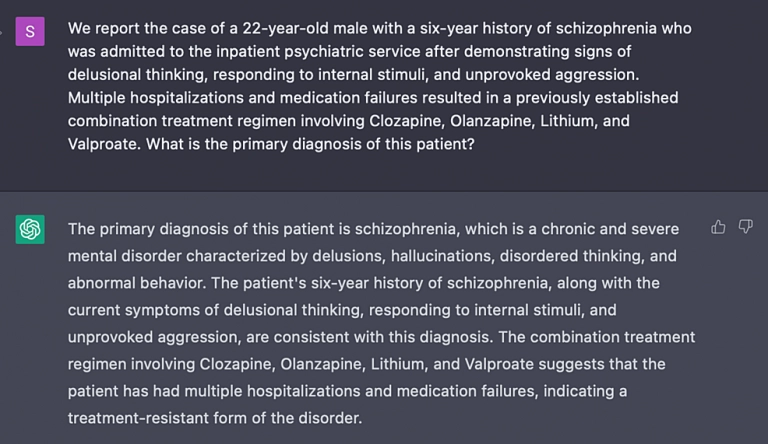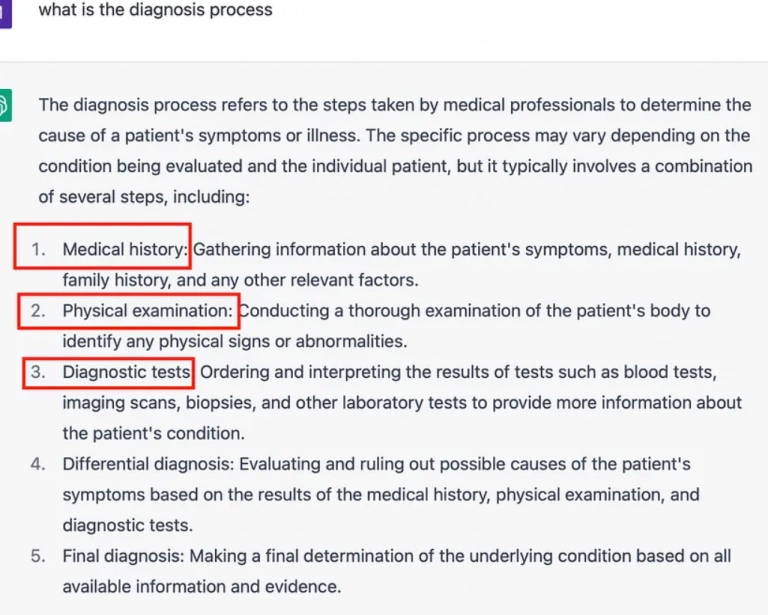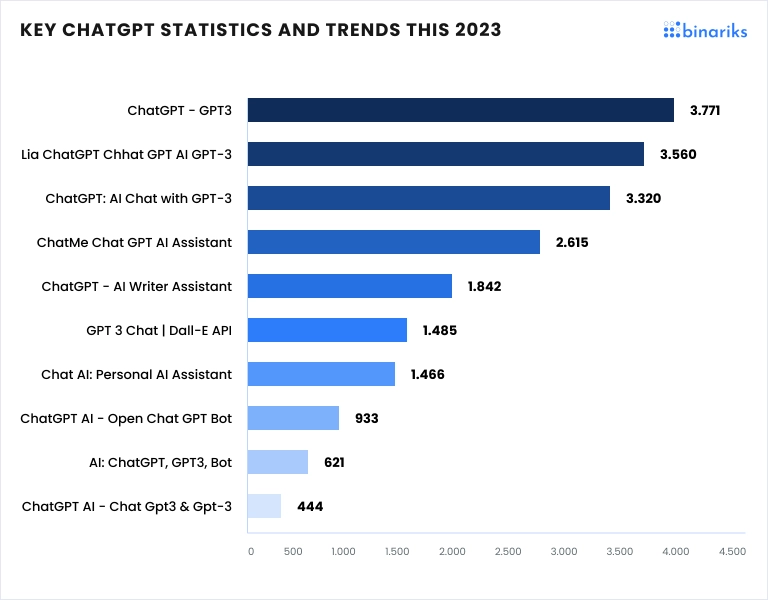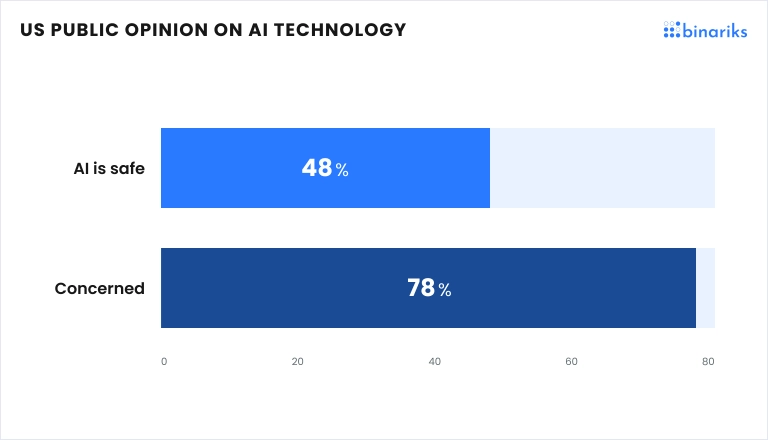The world of healthcare is rapidly evolving, embracing the integration of technology to enhance medical practices. Telehealth solutions, particularly Remote Patient Monitoring (RPM), have emerged as transformative tools, empowering healthcare providers to monitor and manage patients' well-being remotely.
As the demand for efficient and personalized care rises, innovative technologies are essential in advancing telemedicine practices (source ).

(source )
At Binariks, we have extensive experience developing RPM solutions and implementing cutting-edge technologies, including AI-based ones. With our deep understanding of the telemedicine landscape, we are excited to explore the potential of ChatGPT in remote patient monitoring and transform how telemedicine is conducted.
Our team's expertise in RPM solutions and AI integration enables us to provide valuable insights into the benefits, concerns, and best practices associated with incorporating ChatGPT into telehealth solutions. In this article, we will uncover how this powerful tool can shape the future of remote patient monitoring.
It will elevate the standards of telemedicine practices and empower healthcare providers to deliver personalized, timely, and empathetic care to patients, regardless of geographical barriers. Let's dive in.
Who is already using ChatGPT in RPM
The utilization of ChatGPT for remote patient monitoring and in the broader healthcare field has garnered considerable interest. Numerous companies and medical professionals acknowledge its immense potential. Here are some noteworthy examples that showcase the impact.
Andor Health:
Andor Health, a healthcare technology company, has partnered with Oracle Health to integrate its ThinkAndor platform with Oracle Health's electronic health record (EHR) system. By leveraging the power of ChatGPT, ThinkAndor enhances virtual health interactions, including virtual nursing and virtual sitting, resulting in cost savings and improved scalability.
The platform has already proven effective, demonstrating a 35% reduction in abandonment rates, reducing the cost of virtual nursing by 30% and virtual sitting by 70%, and lowering readmission rates by 40% through its virtual visits, virtual rounding, and virtual community collaboration capabilities.
This collaboration with ChatGPT brings advanced virtual care experiences, offering significant benefits in terms of efficiency, cost-effectiveness, and patient outcomes (source ).
Dr. Josh Tamayo-Sarver – emergency room doctor:
“Dealing with ChatGPT is like working with an incredibly brilliant, hard-working – and occasionally hungover – intern”.
Dr. Tamayo-Sarver has found ChatGPT to be a valuable resource for explaining medical scenarios to patients and their families, especially when his ER ward is busy or understaffed. It is faster than starting from scratch and allows human interns to focus on patient care. Seen from that perspective, ChatGPT is great at:
- Write down the patient’s history;
- Create long-form written communication for patients and staff;
- Explain highly technical information to patients simply with empathy and compassion.
As an advocate of expanding the usage of AI in healthcare, Dr. Tamayo-Sarver believes that the industry should focus on more immediately achievable applications instead of long-term prospects in which artificial intelligence completely transforms medicine (source ).
Babylon Health:
Babylon Health, a UK-based healthcare provider, has developed an AI-powered chatbot to enhance healthcare communication. The chatbot is powered by ChatGPT and equipped with natural language processing, offering patients personalized healthcare advice and support.
By efficiently handling routine tasks like appointment scheduling and prescription refills, it lightens the workload of healthcare providers and improves patient satisfaction through a more engaging and personalized healthcare approach (source ).
As we delve into the benefits of ChatGPT in the telemedicine business and beyond, these examples highlight the growing adoption of ChatGPT across healthcare domains, demonstrating its potential to improve patient care and communication significantly. It provides valuable insights for both RPM providers and the broader healthcare industry.
How can RPM telehealth solutions use ChatGPT
The seamless integration of ChatGPT and RPM solutions has unlocked new possibilities for healthcare delivery. Through its capabilities in answering questions, monitoring symptoms, providing personalized education, and offering emotional support, ChatGPT enhances the effectiveness and accessibility of RPM, empowering patients and improving their experience.
Let's talk about each point in more detail.
Answer patients' questions
ChatGPT understands patient questions through natural language processing and provides accurate responses based on available medical knowledge. Patients can ask about their symptoms, medication instructions, treatment plans, and general health-related queries. ChatGPT acts as a virtual assistant, offering timely and reliable information to patients and helping them make informed decisions about their health.

Monitor patients' symptoms
Patients or healthcare professionals can input symptoms and relevant information into the system, and ChatGPT can process and interpret the data. It can identify patterns, detect potential red flags, and alert healthcare providers if any concerning symptoms or changes occur.
This proactive symptom monitoring helps ensure timely interventions and enables early detection of health issues, improving patient outcomes. Here is a great case of using ChatGPT in the clinical management of treatment-resistant schizophrenia:

(source )
Provide patients with personalized health education and resources
ChatGPT can provide tailored educational content, including articles, videos, and interactive materials based on patient profiles, medical history, and specific needs. It empowers patients with relevant information about their conditions, treatment options, preventive measures, and healthy lifestyle choices.
By offering personalized resources, ChatGPT enhances patient engagement and promotes self-care.

(source )
Provide patients with emotional support and counseling
In healthcare, emotional support plays a vital role, and ChatGPT can help many RPM companies and telehealth solutions. By utilizing empathy-driven algorithms, ChatGPT can comprehend patients' emotional states and provide compassionate responses.
It can offer coping strategies, guidance, and encouragement for managing emotional challenges like anxiety, stress, and others. While ChatGPT cannot substitute human interaction, it works in conjunction with healthcare professionals' care to ensure that patients feel supported and heard.

(source )
Overcome language barriers between patients and providers
Language barriers can hinder effective communication between patients and healthcare providers. ChatGPT addresses this challenge by acting as a language interpreter in RPM telehealth solutions.
It can translate patient queries and healthcare instructions between different languages, facilitating clear communication and understanding. By overcoming language barriers, ChatGPT promotes inclusivity and ensures that patients receive the necessary care regardless of their linguistic background.
The use of ChatGPT in RPM telehealth solutions is a significant advancement that offers numerous benefits to both healthcare providers and patients. Through the integration of AI, healthcare providers can improve patient engagement, accessibility, and overall quality of care, resulting in a more efficient and patient-centered way.
What does ChatGPT bring to telemedicine business
ChatGPT has achieved unprecedented growth, surpassing all other apps in history, with a user base of over 100 million and over 10 million daily queries (source ).
Numerous publishers globally started launching mobile apps using "chatbot" and "ChatGPT" in their titles. The chart below shows how many times some of such apps were downloaded within just the first ten days of January 2023:

(source )
Implementing ChatGPT into the telemedicine business brings numerous benefits (source ). Here is the list of some key advantages:
- Enhanced Patient Engagement: ChatGPT for telemedicine enables personalized and interactive conversations with patients, fostering engagement and trust. It empowers patients to actively participate in their healthcare journey by addressing their questions, concerns, and information needs conversationally.
- Streamlined Workflow: By automating routine administrative tasks, such as appointment scheduling and documentation, ChatGPT improves workflow efficiency for healthcare providers. This allows them to focus more on direct patient care, leading to increased productivity and better patient outcomes.
- Expanded Accessibility: With AI, telemedicine services become more accessible to a broader population. The chatbot can provide round-the-clock support, allowing patients to seek medical advice and information anytime, anywhere. It breaks down geographical barriers and provides healthcare access to remote or underserved areas.
- Cost Savings: Integrating ChatGPT into telemedicine reduces business operational costs. The chatbot can handle a significant volume of patient inquiries and support interactions simultaneously, reducing the need for additional human resources. This scalability leads to cost savings while maintaining quality care delivery.
- Data-driven Insights: ChatGPT captures valuable patient data and generates insights to inform decision-making and improve healthcare services. It can analyze patient interactions, identify trends, and provide actionable information to healthcare providers, enabling them to deliver personalized and evidence-based care.
By leveraging ChatGPT for telehealth solutions, businesses can enhance patient engagement, streamline workflows, improve accessibility, achieve cost savings, and harness data-driven insights. This integration empowers healthcare organizations to provide efficient, accessible, patient-centered telemedicine services.
Concerns about using ChatGPT in telemedicine
Only 48% think AI is safe and secure, and 78% are very or somewhat concerned that AI technology can be used maliciously, according to a MITRE-Harris Poll survey (source ).

(source )
While the integration of ChatGPT in telemedicine brings promising benefits, there are several caveats and concerns to consider.
Firstly, there are a lot of questions about accuracy and reliability. ChatGPT's responses heavily rely on the data it has been trained on, which can result in occasional inaccuracies or incomplete information.
As a language model, it may not always provide precise medical advice or diagnosis. Healthcare providers need to exercise caution and verify the information provided by ChatGPT to ensure patient safety and avoid potential risks.
The second significant problem is the lack of human judgment. ChatGPT lacks the human judgment and experience that healthcare professionals possess. It may struggle to assess complex medical situations or interpret nuanced patient information accurately.
Consequently, there is a risk of misinterpretation or incorrect guidance. Human oversight and intervention remain crucial in the telemedicine process to validate and supplement the information provided by ChatGPT.
Using ChatGPT in telemedicine also raises concerns about patient privacy and data security. As it involves the exchange of sensitive health information, robust measures must be in place to safeguard patient data from unauthorized access or breaches. Adhering to strict data protection protocols and complying with relevant regulations is essential to ensure patient confidentiality and trust.
ChatGPT offers significant potential in telemedicine, but addressing these concerns and mitigating the associated risks is essential. Combining the power of artificial intelligence with human expertise and oversight can create a more reliable and secure telemedicine environment, ensuring the best possible care for patients.
Architecture consulting
Binariks adjusted the client's patient health monitoring application
Best practices for implementing ChatGPT in RPM solutions
As experts in implementing RPM solutions, we believe that ChatGPT can be effectively integrated into remote healthcare systems. Here are some best practices to consider:
- Training and Fine-tuning: Adequate training and fine-tuning of ChatGPT are crucial to optimize its performance in the context of RPM. Customizing the model to understand specific medical terminologies, patient symptoms, and healthcare protocols enhances its accuracy and relevance.
- Human Oversight and Collaboration: While ChatGPT brings automation and efficiency, it is vital to maintain human oversight and collaboration while implementing RPM solutions. Healthcare professionals should closely monitor the interactions between ChatGPT and patients, ensuring the information's accuracy and the responses' appropriateness.
- Ensure compliance with regulations: Take into account relevant healthcare regulations, such as HIPAA (Health Insurance Portability and Accountability Act) in the US or GDPR (General Data Protection Regulation) in the EU, to ensure patient privacy and data security. With solid experience in developing solutions that adhere to the major healthcare standards and regulations, Binariks can ensure software HIPAA and GDPR compliance.
- Conduct thorough testing and validation: Before deploying ChatGPT in a live RPM environment, conduct rigorous testing and validation to assess its performance, accuracy, and usability. Test the chatbot's responses across various scenarios and ensure it meets the desired level of reliability and quality.
- Continuous Evaluation and Improvement: Regular evaluation and improvement of ChatGPT's performance are essential to address any limitations or evolving needs in the RPM solution. Collecting feedback from healthcare providers and patients helps identify areas for enhancement and refine the model's responses. We offer ongoing support and expertise in evaluating and optimizing ChatGPT to ensure its effectiveness in remote healthcare settings.
By following these best practices and partnering with experts like Binariks, healthcare organizations can harness the power of ChatGPT to enhance the quality, efficiency, and accessibility of remote patient monitoring.
Our team is well-equipped to provide guidance, support, and customized solutions for leveraging the capabilities of ChatGPT in remote healthcare.
Build compliant and secure RPM apps with healthcare software engineering experts
Final thoughts
ChatGPT's advanced capabilities have greatly enhanced the effectiveness and accessibility of RPM. By leveraging the power of artificial intelligence and natural language processing, healthcare providers can now deliver more efficient and personalized care to patients in remote settings.
As experts in implementing RPM solutions, Binariks understands the importance of effectively adopting ChatGPT and remote healthcare technologies. Our team can address any questions or concerns related to the implementation process and help healthcare providers harness the full potential of ChatGPT in delivering remote healthcare services.
We can shape a future where accessible, personalized, and effective remote patient monitoring becomes the new standard.
FAQ
Share

